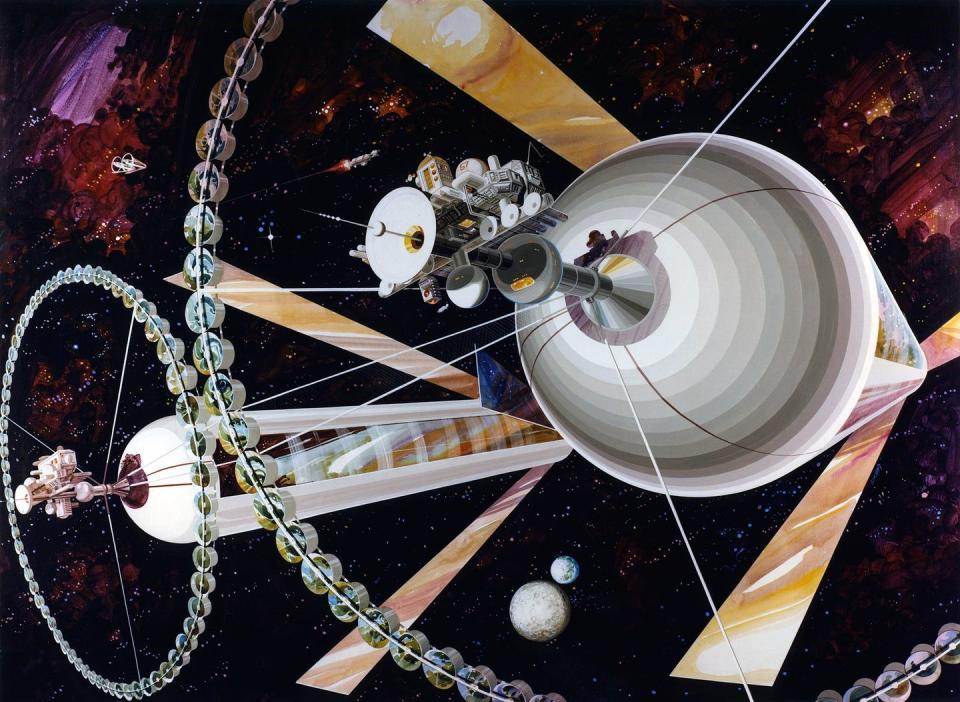A Bizarre Study Says People Can Live in Asteroids. It's Actually a Brilliant Idea.

In a 1974 Physics Today article, physicist Gerard K. O’Neill laid out his theoretical designs for future space-based colonies that he touted as “far more comfortable, productive and attractive” than most cities on Earth. What started as a joke (O’Neill readily admits) turned into something more serious as his calculations began to make a startling amount of sense.
These O’Neill cylinders, which were subsequently detailed extensively in the physicist’s 1976 book High Frontiers, have captivated scientists and futurists for half a century. In 2019, Jeff Bezos gave an entire presentation divulging his desire to build O’Neill cylinders, and the idea is on full display in shows like Babylon 5, novels like Arthur C. Clark’s Rama, and films like Interstellar.
The basic concept of a O’Neill cylinder is that a spinning tube-like structure simulates gravity via a centripetal force acting on humans living on the cylinder’s inner surface. Although the physics of such a structure checks out, actually building one would likely be the most gargantuan megaproject in human history—but scientists from Rochester University think transforming asteroids into O’Neill cylinders might be the best strategy.

In a study published last year, scientists examined near-Earth asteroids, such as Bennu (the object of the OSIRIS-REx mission), as potential candidates for O’Neill cylinders. Asteroids are particularly attractive candidates because the building materials are already in space (ferrying materials from Earth would likely be prohibitively expensive) and they’d protect a colony from space radiation.
However, the tricky part comes in figuring out how to hollow out the asteroid. Simply spinning the asteroid would cause the celestial body to break apart, so researchers suggest employing a lightweight, flexible, and strong carbon nanotube mesh to keep asteroid material from flinging out into space.
“A cylindrical containment bag constructed from carbon nanotubes would be extremely light relative to the mass of the asteroid rubble and the habitat, yet strong enough to hold everything together,” says co-author Peter Miklavčič in a statement. “Even better, carbon nanotubes are being developed today, with much interest in scaling up their production for use in larger-scale applications.”
While the asteroid spins up using solar-powered rubble cannons (!), this mesh bag would expand and keep debris from floating out into space. This would also create a hollowed out sphere with a layer of rock suitable for building a settlement. How would humans build that settlement? That’s for other scientists to figure out. Study co-author Adam Frank says:
“Based on our calculations, a 300-meter-diameter asteroid just a few football fields across could be expanded into a cylindrical space habitat with about 22 square miles of living area. That’s roughly the size of Manhattan.”
While this paper is described as “wildly theoretical,” the revolutionary aspects of carbon nanotubes is very much a reality. Someday, it just might help fashion an asteroid into a place to call home.
You Might Also Like

